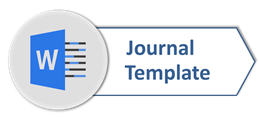Exploring Students’ Learning Style and Proficiency at a University in Indonesia: A Quantitative Classroom Research
Abstract
This study is designed to confirm whether there is a relationship between students’ learning styles and their English Proficiency at one of private universities in Indonesia. Using quantitative classroom research, 40 students were involved to fill out a questionnaire to explore their learning styles. Then, the students were also required to follow an Institutional English Proficiency Test (EPT) to measure their English ability. The result of the questionnaire is analyzed and presented in terms of visual, auditory, and kinesthetic categories of learning style, while the mean score of students’ English proficiency is presented in terms of low, medium, and high proficiency. The correlational analysis is then calculated to reveal to what extent learning style has a relation to English proficiency. This study bears a pedagogical implication for English teachers and practitioners while some limitations were also highlighted.
Full Text:
PDFReferences
Aminatun, D., & Oktaviani, L. 2019. Memrise: Promoting students’ autonomous learning skill through language learning application. Metathesis: Journal of English Language, Literature, and Teaching, 3(2), 214-223.
Anggarista, S. & Wahyudin, AY. 2022. A correlational study of language learning strategies and English proficiency of university students at EFL context. Journal of Arts and Education, 2(1), 26-35.
Ariastuti, M. & Wahyudin, AY. 2022. Exploring academic performance and learning style of undergraduate students in English Education program. Journal of English Language Teaching and Learning (JELTL), 3(1), 67-73.
Aried Triyadi, T., Ash, M. A. & Firdiansyah. 2018. The Comparative Analysis of Students’ learning Styles on Their English Proficiency at State Islamic University Sulthan Thaha Saifuddin Jambi (Doctoral dissertation, Uin Sulthan Thaha Saifuddin Jambi).
Ayu, M., & Indrawati, R. 2019. EFL textbook evaluation: The analysis of tasks presented in English textbook. Teknosastik: Jurnal Bahasa dan Sastra, 16(1), 21-25.
Dunn, R., & Griggs, S. A. 19/90. Research on the learning style characteristics of selected racial and ethnic groups. Journal of Reading, Writing, and Learning Disabilities International, 6(3), 261-280.
Faridah, D. N. 2014. The relationship between students’ learning style and their achievement in listening skills (correlational research at the first grade of the SMAN 01 Pamijahan Bogor). Unpublished undergraduate thesis.
Felder, R. M. 1996. Matters of style. ASEE Prism, 6(4), 18-23.
Gustanti, Y., & Ayu, M. 2021. The Correlation Between Cognitive Reading Strategies and Students’ English Proficiency Test Score. Journal of English Language Teaching and Learning, 2(2), 95-100.
Jaya, H. P. 2019. Learning styles used and English proficiency of the students of English education study program faculty of teacher training and education Sriwijaya university. HOLISTICS, 11(1).
Mandasari, B., Aminatun, D., Pustika, R., Setiawansyah, S., Megawaty, D. A., Ahmad, I., & Alita, D. 2022. Pendampingan Pembelajaran Bahasa Inggris Bagi Siswa Siswi Sma/Ma/Smk Di Desa Purworejo Lampung Tengah. Community Development Journal: Jurnal Pengabdian Masyarakat, 3(1), 332-338.
Marzulina, L. 2019. Learning Styles and English Proficiency of Undergraduate EFL Students at One State Islamic University in Sumatera, Indonesia. Jurnal Pendidikan dan Pengajaran, 6(1).
Nurlaela, L., Samani, M., Asto, I. G. P., & Wibawa, S. C. 2018. The effect of thematic learning model, learning style, and reading ability on the students’ learning outcomes. In IOP Conference Series: Materials Science and Engineering. 296(1), 12-39.
Phillips, D. 2004. Longman Introductory Course for the TOEFL Test: The paper Test [CD].
Reid, J.M. 1987. The learning style preferences of ESL students. TESOL Quarterly, 21(1), 87-11.
Rosedi, S.R.M, Dahari, M., & Said, K.M. 2014. The need to incorporate kinesthetic learning as one of primary methods in Maritime English Communication Class. Paper presented at Asian TEFL International Conference, Kuching Sarawak.
Sahriyah, S., Mistar, J., & Rahmati, N. A. 2021. The Differences in English Proficiency of Students with Different Learning Style. Jurnal Penelitian, Pendidikan, dan Pembelajaran, 16(17).
Supalak, N. 2016. Comparative exploration of learning styles and teaching techniques between Thai and Vietnamese EFL students and instructors. Journal of Language and Cultural Education, 4(3), 103-141.
Wahyudin, A. Y., & Rido, A. 2020. Perceptual learning styles preferences of international Master's students in Malaysia. Bahtera: Jurnal Pendidikan Bahasa Dan Sastra, 19(1), 169-183.
Yuyun, I., Meyling, M., Laksana, N., & Abenedgo, D. 2018. A study of English proficiency test among the first-year university students. Journal of Language and Literature, 18(1), 1-8.
DOI: https://doi.org/10.33365/ts.v20i2.2150
Refbacks
- There are currently no refbacks.
Copyright (c) 2022 Achmad Yudi Wahyudin, Asti Wahyuni

This work is licensed under a Creative Commons Attribution-ShareAlike 4.0 International License.
Teknosastik: Jurnal Bahasa dan Sastra
Publisher: Universitas Teknokrat Indonesia
Address: Zainal Abidin Pagaralam Street 9-11, Bandar Lampung, Indonesia
Website: https://ejurnal.teknokrat.ac.id/index.php/teknosastik/index

Creative Commons Attribution-ShareAlike 4.0 International License






